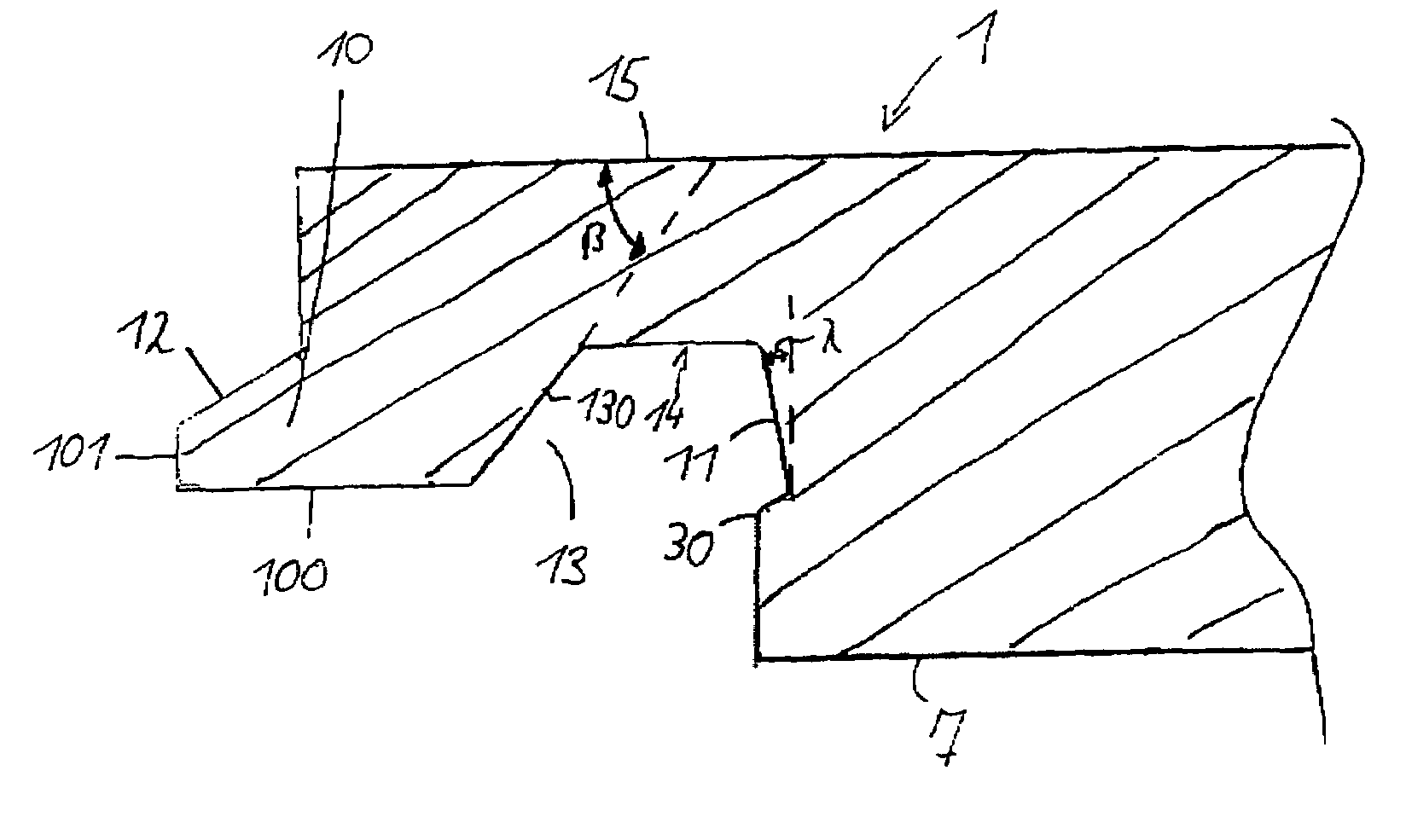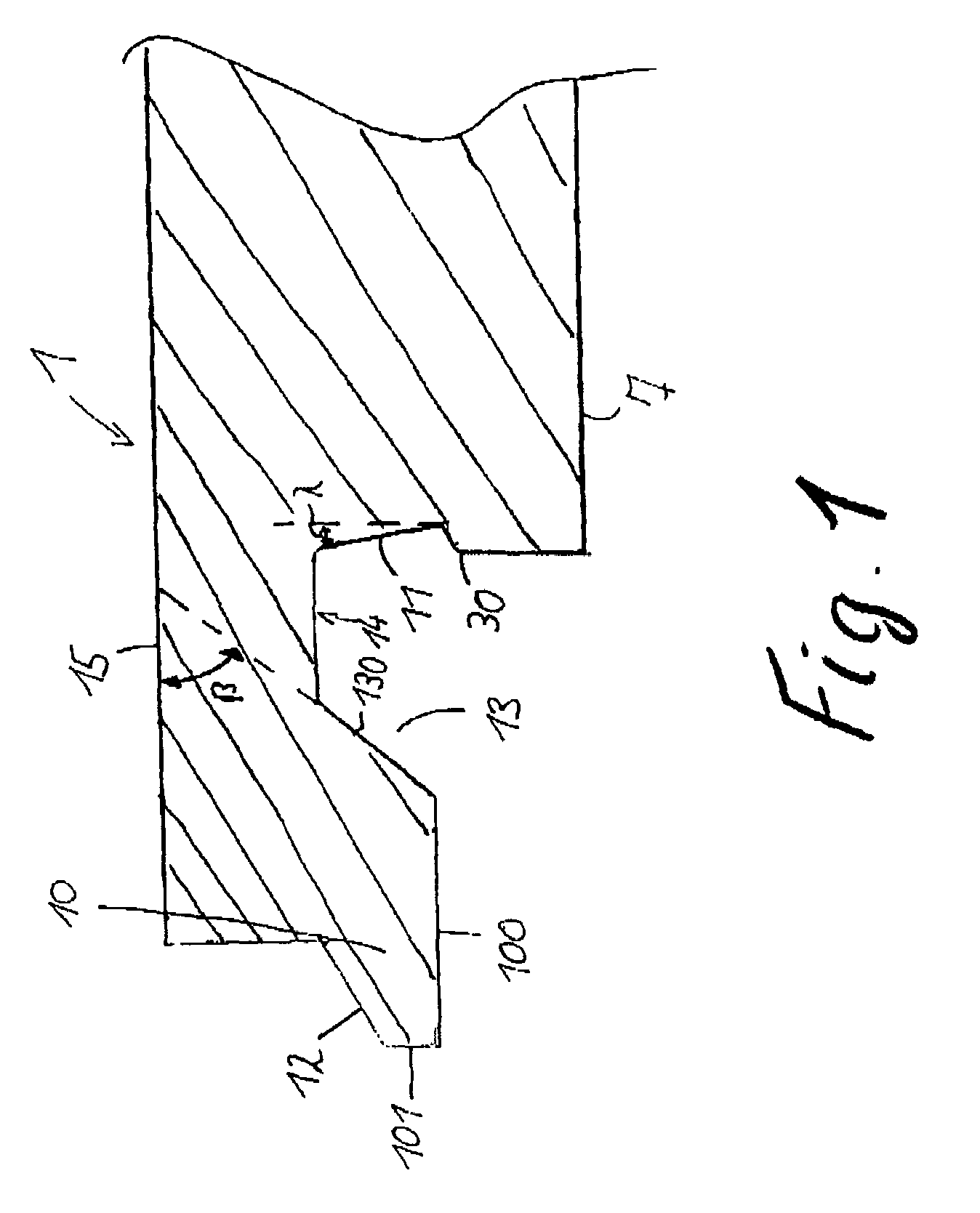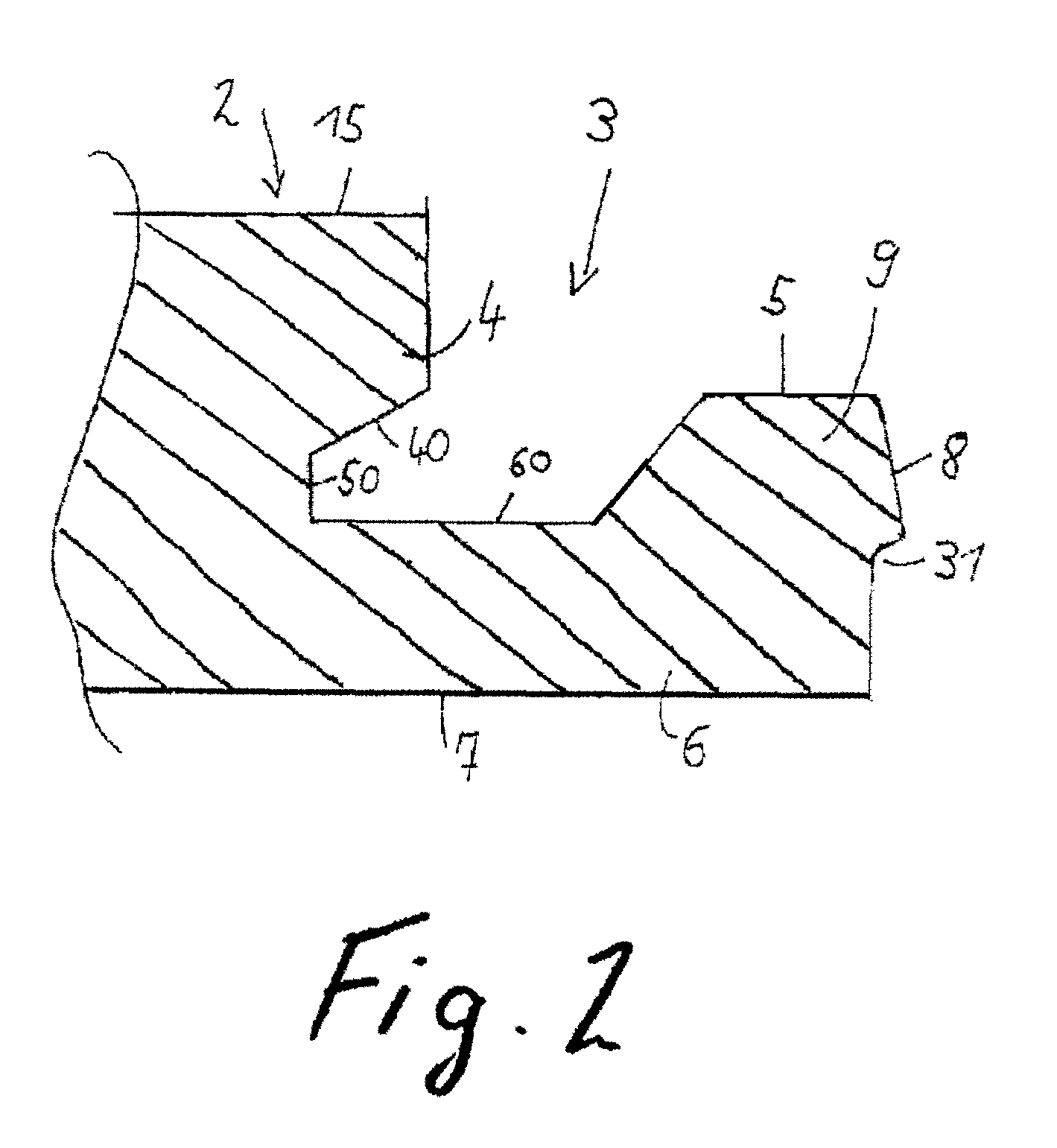Floor panel and method of laying a floor panel
a technology of floor panels and axis angles, applied in the field of floor panels and to a method of laying a floor panel, can solve the problems of easy pivoting about an axis parallel to the first side edge, panel core swelling, etc., and achieve the effect of reducing the angle between the underside of the panel
- Summary
- Abstract
- Description
- Claims
- Application Information
AI Technical Summary
Benefits of technology
Problems solved by technology
Method used
Image
Examples
Embodiment Construction
[0052]FIGS. 1 and 2 show a floor panel 1 which comprises a medium-density or high-density fiberboard (MDF or HDF). On its top side 15, the floor panel 1 may be provided with a decorative layer 16 which may be formed, for example, by a paper layer which exhibits a woodgrain and is coated with a synthetic-resin layer serving to protect against wear. A sound-insulation layer may be adhesively bonded to the underside 7 in order to improve the footfall-sound properties of the laid floor panels. As an alternative to using an HDF or MDF board, the panel 1 may be produced from an OSB material (orientated strands board), it being possible in this case to dispense with a decorative layer 16. The panel 1 is provided with a tongue 10 on a first side edge, preferably on the longitudinal side of the panel 1, and with a recess 3 on the opposite, second side edge.
[0053]The recess 3 and the tongue 10 run over the entire length of the side edges. An outwardly projecting tip 101 with a vertical front ...
PUM
 Login to View More
Login to View More Abstract
Description
Claims
Application Information
 Login to View More
Login to View More - R&D
- Intellectual Property
- Life Sciences
- Materials
- Tech Scout
- Unparalleled Data Quality
- Higher Quality Content
- 60% Fewer Hallucinations
Browse by: Latest US Patents, China's latest patents, Technical Efficacy Thesaurus, Application Domain, Technology Topic, Popular Technical Reports.
© 2025 PatSnap. All rights reserved.Legal|Privacy policy|Modern Slavery Act Transparency Statement|Sitemap|About US| Contact US: help@patsnap.com



